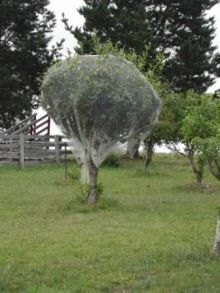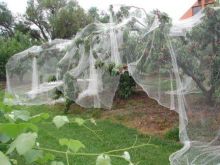Netting of fruit trees and vegetable gardens
Wildlife (birds, possums, bats, reptiles) can become entangled in loose or poorly installed netting.
Proper installation of netting over backyard fruit trees and vegetable gardens could mean the difference between life and death for our local wildlife.
- Use durable knitted netting with mesh size 30mm or smaller to exclude flying-foxes
- White netting, more easily seen by wildlife is recommended
- Stretch the netting tautly over a homemade frame – loose netting can lead to entanglement
- Ensure the frame is at least one metre clear of the tree
- Peg the netting securely to the ground for full protection
- Velcro or tie one side of the net to the frame so you can access fruit and keep it closed
Thin nylon/monofilament netting should NEVER be used. Even stretched tightly over a frame wildlife can still become entangled and suffer appalling injuries often resulting in death.
Download this informative PDF which tells you all you need to know about netting your fruit and vegetable garden:
Netting_orchards_and_vegetable_gardens
More information on safely netting backyard fruit trees:
Alternative methods of protecting ripening fruit:
- Use clothes pegs to peg 50% shade cloth over the branches of the tree bearing fruit. Shade cloth can be removed after fruiting has finished and reused the following year
- Tie paper bags over ripening fruit. NB: bags will need to be replaced if they become wet
Whichever way you protect your fruit, please check your trees daily. If, despite precautions, any wildlife is entangled, do not attempt to release it yourself. Contact your nearest animal rescue organisation Do not attempt to release them yourself – in particular, bats should be handled only by trained, vaccinated personnel.
Examples of netting
A single tree can be netted, with the fabric pulled tight.

A vegetable garden bed or orchard can be covered with walk-through netting.

Loosely netted trees like this can trap wildlife . .

. . . leading to this
